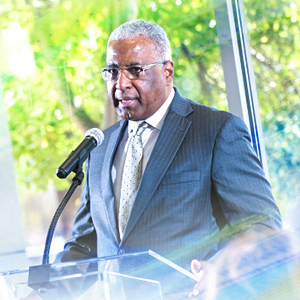Birmingham Takes Bold Actions to Cut Energy Costs
July 31, 2017

Fixing problems in aging buildings was taking a financial toll on the city of Birmingham, Alabama.
City leaders spent emergency funds to make repairs and keep facilities in working condition. Failing building systems forced the closure of one library, and firefighters at some stations lived in leaky, damp conditions.
Faced with hard choices, city leaders wanted solutions. They outlined a plan for bold action, with a goal to reduce energy consumption and utility costs by 20 percent in city buildings. Their vision would make Birmingham a sustainable, green community.
The challenge? The city owns or leases 125 buildings. And shrinking tax revenue caused by residents leaving the city for the suburbs meant the budget was tight. Their aim was to provide better libraries, community centers, museums, recreation centers and office spaces to residents and employees — all without increasing tax dollars to pay for it.
Evaluating the needs
Enlisting the help of Trane, the city evaluated the needs in every city building. The team conducted energy audits and utility assessments, reviewing each building from top to bottom. Many of the city buildings needed modern building energy management systems or upgrades to their building automation systems (BAS) to provide better control and more efficient performance.
“The vast majority of the buildings needed something, whether it was improvements to HVAC, lighting or water,” says Mark Schnetzka, Energy Services contracting sales manager with Trane Georgia/Alabama and Carolinas districts.
Trane uncovered tremendous reductions in water, gas and electricity usage — cost savings that provided the revenue to fund improvements in every city building. The energy conservation measures include: water upgrades in 119 buildings; lighting upgrades in 117 buildings; energy and HVAC controls for 108 buildings; building envelope improvements in 59 buildings; HVAC//mechanical upgrades in 45 buildings; roof replacements in 31 buildings; and transformer upgrades for 12 buildings.
Birmingham committed to a $61.3 million project — to be funded using a performance contract, which relies on energy savings over a 20-year period. The improvements outlined in the plan will take two years to implement. It’s expected to cut annual energy and operational costs by more than 30 percent, saving the city more than $100 million over the next two decades.
A lesson in bold action
Trane will continue to work with Birmingham to ensure the expected savings are realized over the life of the project.
As many other cities and government entities are confronted with similar challenges as budgets tighten and buildings age, Birmingham can be a model of what is possible with bold action.
New innovations make it possible to install cutting-edge HVAC and building control technologies in historic buildings. Cost savings and efficient performance can be realized when cities look at their needs holistically and establish a plan — and follow up with action.
“I would tell other cities not to wait, because they will continue to feel the pain of finding budget dollars for these aging, failing facilities,” Schnetzka says. “Be bold. Leverage the gains that are possible and start saving the energy and money now.”
In addition to cutting energy use by 20 percent, the city also wanted to complete 30 percent of the work using minority-owned businesses. Learn how they did it in part two - coming soon.
































































































